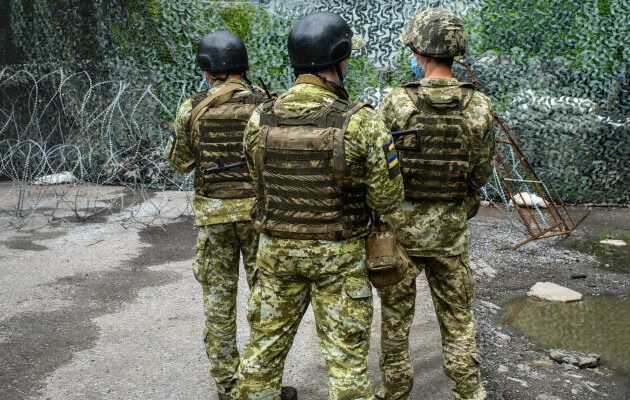ReportageThe drastic restrictions on movement from Luhansk and Donetsk to the rest of Ukraine accentuate the isolation of the inhabitants of these self-proclaimed pro-Russian republics. And every day they are moved further away from their compatriots, with sometimes dramatic consequences for families on both sides of the front line.
When the Ukrainian armored vehicle arrives, the stray cats sleeping at the foot of the barbed wire raise their heads, stretch out and leave without haste. Behind them, a huge camouflage net bars the road from side to side, next to concrete shelters topped with the national flag and the red and black nationalist banner. It is enough to approach to distinguish the opposing positions, at 1,300 meters. Three armed border guards warn: we must not go on forever, shots may come in front. There are almost every day around, from dusk, when the observers of the Organization for Security and Cooperation in Europe (OSCE), responsible for monitoring compliance with the ceasefire, have finished their day.
Impossible to go further. The military net, arranged like a giant curtain that marks the “zero point” of the checkpoint of Mayorsk, in Donbass, separates two worlds: Ukraine on one side and, on the other, the self-proclaimed People’s Republic of Donetsk, controlled, like that of Luhansk, by pro-Russian separatist groups supported by Moscow in the war that has raged since 2014 in this eastern region of the country. “It is the gate of civilization, says Elena, a 33-year-old border guard and former entrepreneur, who fled Donetsk and joined Ukrainian forces after the conflict began. We are the last to see those who cross it. We say hello and goodbye to them. “ Usually thousands of people pass through here every day. But, for nearly a year and a half, the camouflage net has remained desperately closed and the checkpoint completely deserted.
It all came to a screeching halt in March 2020, when Kiev closed the crossings to stem the Covid-19 epidemic. When he reopened them eight months later, in November, the pro-Russian separatist authorities refused to do the same on their side, citing, in turn, the health risk. Only one crossing point operates every day, in Luhansk, near the village of Stanytsa Louhanska – for pedestrians, exclusively. Another allows you to get out of Donetsk, but it is only open two days a week and only lets people pass in small quantities – a hundred a day, on average. The last five remain closed and no one knows when they will reopen.
In Maïorsk, the effervescence gave way to silence. At the entrance to the checkpoint, parking lots and containers are empty. No one ventures to the side of the road, into the tall grass, where red signs with a skull and crossbones warn of the presence of mines. From time to time, a civilian shows up in front of the barrier to try his luck. “We explain to him that we are open, but that the separatists will not let him in, says Vladislav, one of the border guards (those whose last names are not mentioned preferred to remain anonymous). If he insists, he is allowed to pass, but we see him return shortly after. “
You have 85.63% of this article to read. The rest is for subscribers only.
